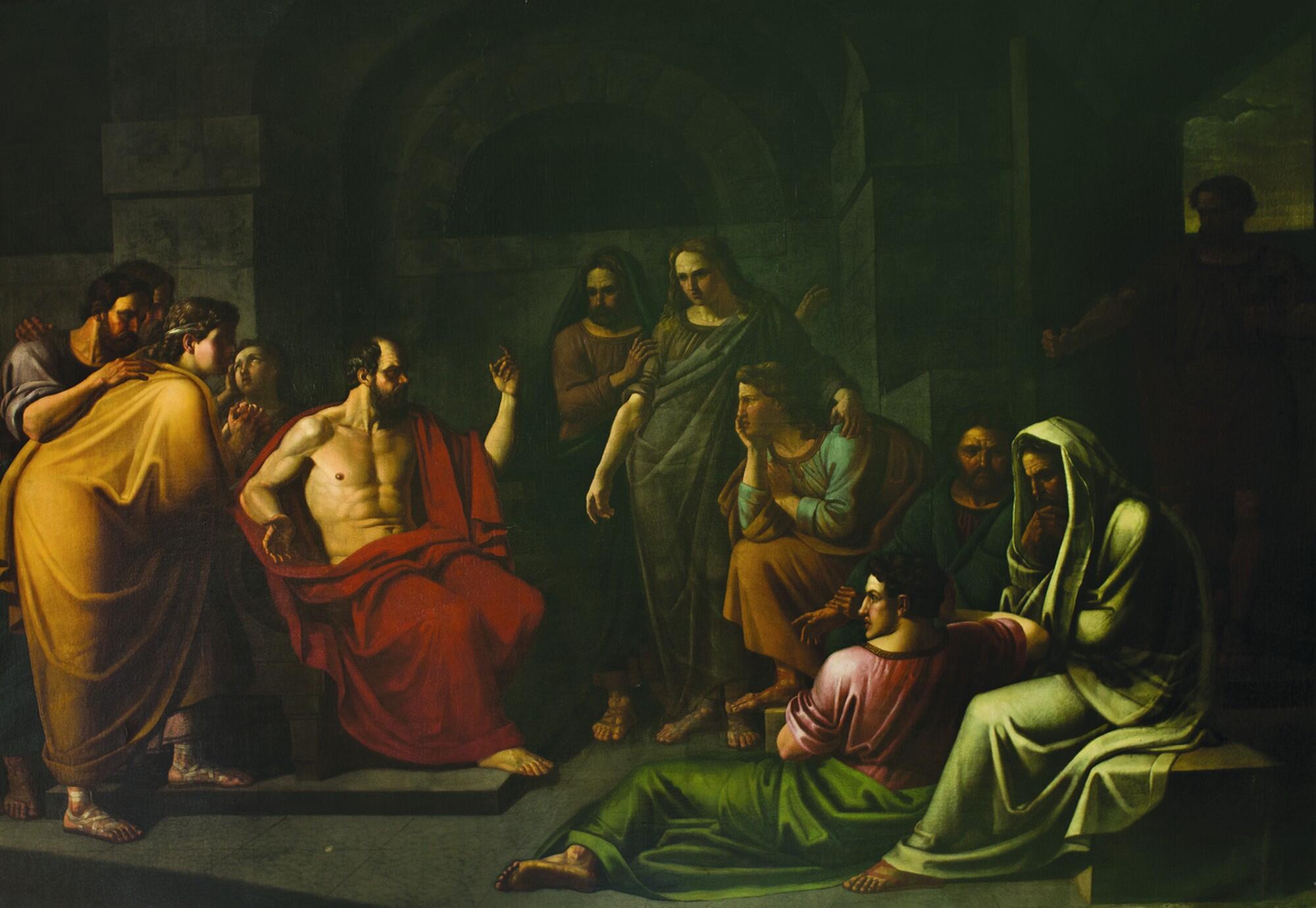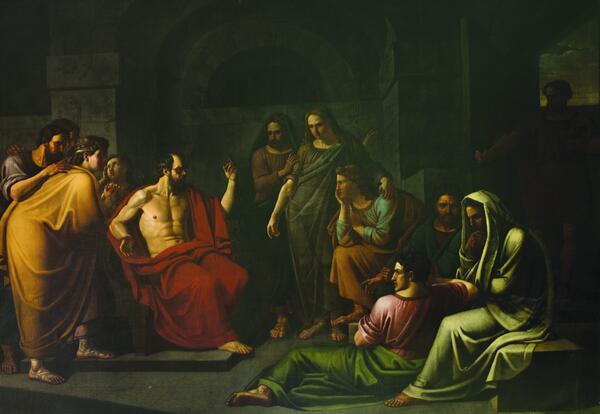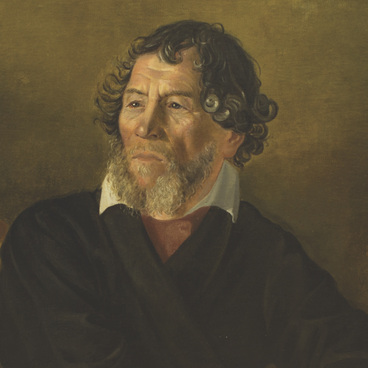This painting is an example of the history genre of the first half of the 19th century. It was created by the artist and teacher Alexander Nothbeck. As a student at the Academy of Arts in St. Petersburg, he painted a canvas to take part in the main academic competition for a large gold medal. The theme for the competition works was the death of the ancient Greek philosopher Socrates, who was falsely accused of ‘atheism’, the ‘seduction of youth’ and was executed.
The citizens of Athens thought of Socrates in two ways. For some, he was the embodiment of a great sage, for others he was a bogus teacher, who seduced young people and did not honor the gods. The political demagogues did not support the philosophy of Socrates, who taught self-improvement, limiting the power of the crowd and honoring the laws. The philosopher also openly criticized democratic institutions. The public image of the ‘corrupter’ was enhanced by Aristophanes' comedy ‘Clouds’, in which Socrates was portrayed as an idler and a blasphemer, who spoiled young people with ‘godless’ teachings. As a result, Socrates was officially accused of atheism.
Plato, one of the disciples of Socrates, recreated the last day of his teacher’s life in the dialogue “Phaedo”. According to Plato, Socrates spent this day surrounded by his students. He consoled them with conversations about immortality and the posthumous life of the soul. Nothbeck used Plato’s description and almost literally portrayed the scene of farewell in a gloomy prison. He depicted a moment full of solemnity and sadness. The postures, gestures, and movements convey how upset everyone is. In the center of the triangular multi-figure composition is the philosopher, around him are the students who have come to say goodbye.
Little is known about Alexander Nothbeck. It is known that he studied at the Academy in St. Petersburg at the same time as Alexander Ivanov, who painted the celebrated painting ‘The Appearance of Christ to the People’. During his studies, Nothbeck repeatedly received awards for his paintings, and the painting ‘Theseus Killing the Minotaur in the Cretan Labyrinth’ earned him a large gold medal. In 1860, Nothbeck got the title of academician for the painting ‘Saint Jerome in the Cave with a Lion’.
The artist participated in painting the church on Aptekarsky Island in St. Petersburg. Only a few of his small works have remained. The canvas from the Irkutsk Regional Art Museum is the most significant work of the artist. The painting entered the collection in 1951 from the Russian Museum.
The citizens of Athens thought of Socrates in two ways. For some, he was the embodiment of a great sage, for others he was a bogus teacher, who seduced young people and did not honor the gods. The political demagogues did not support the philosophy of Socrates, who taught self-improvement, limiting the power of the crowd and honoring the laws. The philosopher also openly criticized democratic institutions. The public image of the ‘corrupter’ was enhanced by Aristophanes' comedy ‘Clouds’, in which Socrates was portrayed as an idler and a blasphemer, who spoiled young people with ‘godless’ teachings. As a result, Socrates was officially accused of atheism.
Plato, one of the disciples of Socrates, recreated the last day of his teacher’s life in the dialogue “Phaedo”. According to Plato, Socrates spent this day surrounded by his students. He consoled them with conversations about immortality and the posthumous life of the soul. Nothbeck used Plato’s description and almost literally portrayed the scene of farewell in a gloomy prison. He depicted a moment full of solemnity and sadness. The postures, gestures, and movements convey how upset everyone is. In the center of the triangular multi-figure composition is the philosopher, around him are the students who have come to say goodbye.
Little is known about Alexander Nothbeck. It is known that he studied at the Academy in St. Petersburg at the same time as Alexander Ivanov, who painted the celebrated painting ‘The Appearance of Christ to the People’. During his studies, Nothbeck repeatedly received awards for his paintings, and the painting ‘Theseus Killing the Minotaur in the Cretan Labyrinth’ earned him a large gold medal. In 1860, Nothbeck got the title of academician for the painting ‘Saint Jerome in the Cave with a Lion’.
The artist participated in painting the church on Aptekarsky Island in St. Petersburg. Only a few of his small works have remained. The canvas from the Irkutsk Regional Art Museum is the most significant work of the artist. The painting entered the collection in 1951 from the Russian Museum.



